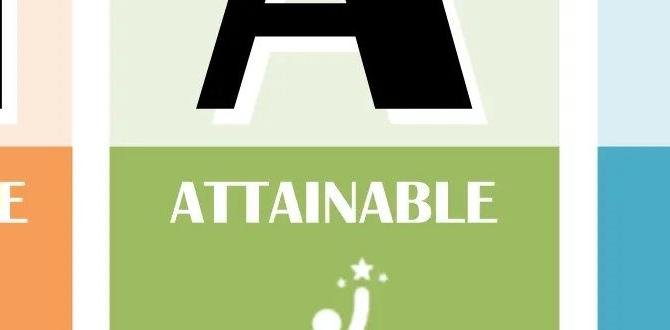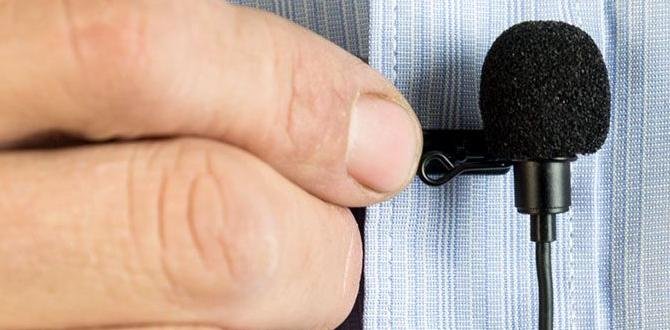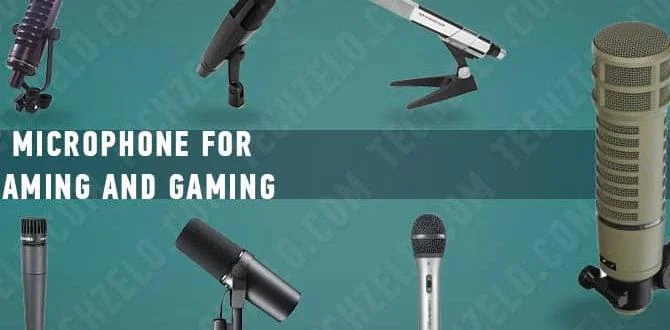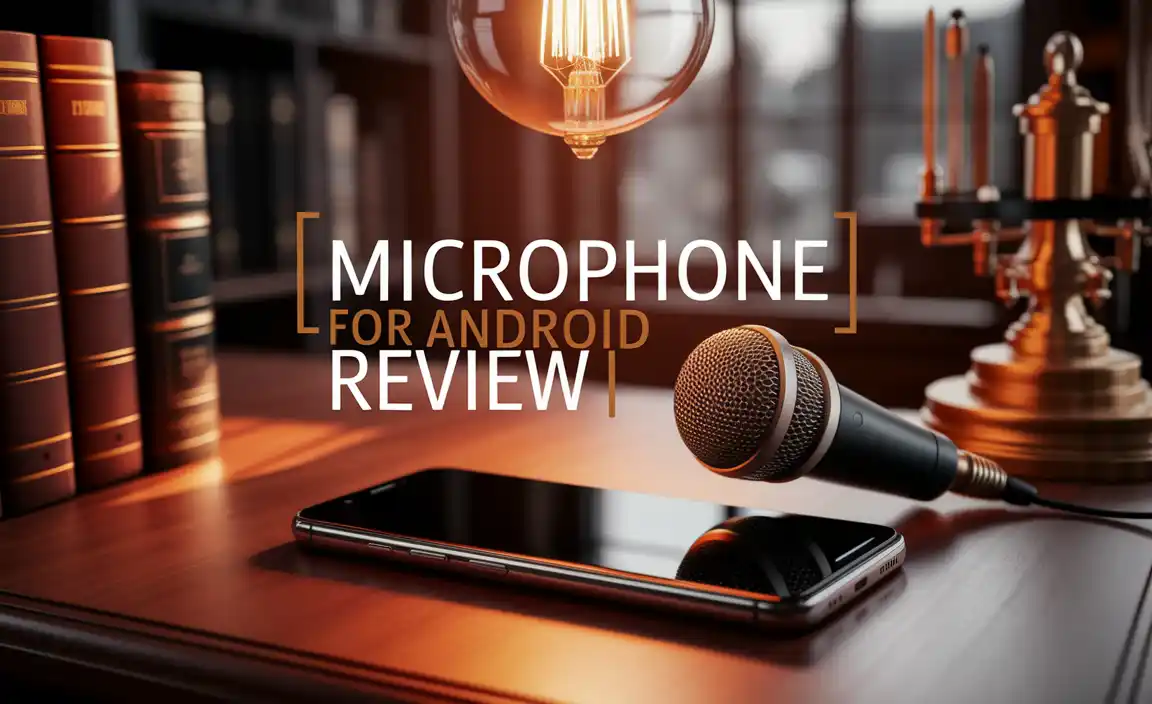Quick Summary: Choosing the right microphone for singing on your podcast is crucial for professional sound. Focus on condenser mics for sensitive vocal capture and dynamic mics for robustness and warmth. Consider USB mics for simplicity or XLR mics with an audio interface for greater control.
Hey there, audio adventurers! Bob E Riley here. So, you’re ready to take your podcast from just talking to truly singing your heart out? That’s fantastic! But then comes the big question: what microphone should you use for singing on your podcast? It’s a common hurdle, and it can feel a bit overwhelming with all the tech talk out there. Finding that perfect mic that captures your vocal magic without breaking the bank? That’s the sweet spot. Don’t worry, I’m here to guide you through it, step-by-step. We’ll cut through the jargon and get you set up with a mic that makes your voice shine.
Why the Right Microphone Matters for Singing Podcasters
When you’re singing on a podcast, you’re not just recording speech; you’re capturing nuanced musical expression. The right microphone can make the difference between a breathy, warm ballad that pulls your listeners in and a thin, tinny sound that makes them reach for the skip button. Your voice is your instrument, and the microphone is its amplifier. A great mic will capture the full range of your vocal dynamics, the subtle textures, and the emotional delivery that makes your singing unique. Poor mic choice can lead to:
- Harsh, sibilant sounds (that “s” sound being too sharp).
- A lack of depth or richness in your voice.
- Unwanted background noise creeping into your recording.
- A “boxy” or muffled quality that detracts from your performance.
Investing a little time and thought into your microphone choice will pay off immensely in the overall quality and listenability of your podcast singing segments. It’s about creating an immersive experience for your audience, making them feel like they’re right there with you.
Understanding Microphone Types for Singing Podcasting
Not all microphones are created equal, especially when it comes to capturing vocals. For singing on a podcast, two main types generally come up: condenser and dynamic microphones. Each has its strengths and weaknesses, and understanding them will help you pick the best fit for your needs.
Condenser Microphones: Sensitivity and Detail
Condenser microphones are often the go-to choice for studio vocal recording, and for good reason. They are incredibly sensitive, meaning they can pick up very subtle details in your voice. This makes them excellent at capturing the full frequency range and dynamic nuances of singing.
- Pros: Superior detail, wider frequency response, excellent for capturing the natural tone of your voice, ideal for soft or powerful singing.
- Cons: Can be more fragile, require phantom power (usually from an audio interface or mixer), can pick up more ambient noise if your recording space isn’t treated well.
Think of a condenser mic as a finely tuned instrument. If your singing is your primary focus and you have a relatively quiet recording environment, a condenser mic can deliver stunning results.
Dynamic Microphones: Durability and Warmth
Dynamic microphones are tougher and less sensitive than condensers. They are often used for live performances and loud sound sources, but they can also be fantastic for podcast singing, especially if you’re looking for a warmer, more “radio-ready” sound or if your recording space isn’t perfectly soundproof.
- Pros: Very durable, handle loud volumes well, less sensitive to background noise, often have a warmer, more focused sound that can be flattering for vocals.
- Cons: Less detailed than condensers, may not capture the absolute finest nuances of a breathy vocal performance.
A dynamic mic can be a great workhorse, especially if you’re singing loudly or if you have a bit of room echo you want to minimize. Many classic vocal recordings were made on dynamic mics!
USB vs. XLR Microphones: Connectivity Options
Once you’ve decided on a microphone type (condenser or dynamic), you’ll need to consider how it connects to your computer. This is where USB and XLR microphones come into play.
USB Microphones: Plug-and-Play Simplicity
USB microphones are incredibly popular for podcasters because they are so easy to use. You simply plug them into your computer’s USB port, and you’re ready to go. They have a built-in preamp and analog-to-digital converter.
- Pros: Extremely easy to set up, no extra gear needed, good quality for beginners, often more affordable.
- Cons: Less flexibility for future upgrades, quality can vary significantly, you’re limited to one microphone connection per USB port (though some interfaces handle multiple USB mics).
If you’re just starting out and want the most straightforward path to recording your singing, a USB microphone is a fantastic option. Many podcasters begin their journey with one.
XLR Microphones: Professional Flexibility
XLR microphones are the standard in professional audio. They use an XLR cable (which looks like a thick, three-pin connector) and require an audio interface or mixer to connect to your computer. This interface provides phantom power (if needed for condensers) and converts the analog signal to digital.
- Pros: Higher audio quality potential, greater flexibility and expandability, can connect multiple microphones, allows for more control over your sound.
- Cons: Requires additional equipment (audio interface/mixer), steeper learning curve, can be more expensive upfront.
If you’re serious about long-term audio quality and want the option to add effects or expand your setup later, an XLR setup with an audio interface is the way to go. For an excellent overview of audio interfaces, you can check out resources from organizations like the Audio Engineering Society (AES), a reputable professional organization in the field.
Key Features to Look for in a Singing Podcast Microphone
Beyond the type of microphone, several specific features will impact how well it performs for your singing. Let’s break them down:
Polar Patterns: Where the Mic Listens
The polar pattern (or pickup pattern) describes the directionality of a microphone. For singing, you’ll most commonly encounter these:
- Cardioid: This is the most popular pattern for vocals. It picks up sound primarily from in front of the microphone, rejecting sound from the sides and rear. This is great for isolating your voice and minimizing room noise. Perfect for solo singers on a podcast.
- Omnidirectional: This pattern picks up sound equally from all directions. While it can sound very natural, it will also pick up a lot of your room, which is usually undesirable for podcasting unless your space is perfectly treated.
- Bidirectional (Figure-8): This pattern picks up sound from the front and rear, while rejecting sound from the sides. It’s less common for solo podcast singing but can be useful for specific two-person interview setups or if you’re trying to capture room ambience artistically.
Frequency Response: Capturing Your Vocal Range
Frequency response refers to how a microphone captures different sound frequencies (low bass notes, mid-range sounds, and high trebles). For singing, you want a microphone that has a relatively flat and extended frequency response, especially in the mid-range where the human voice sits. Some microphones are “voiced” to emphasize certain frequencies, which can be great for adding “warmth” or “presence” to vocals.
Sensitivity: How Loud a Signal It Produces
Sensitivity measures how much electrical output a microphone produces for a given sound pressure level. High-sensitivity microphones (often condensers) will produce a stronger signal, meaning you might need less gain from your preamp. Low-sensitivity microphones (often dynamics) require more gain but are less likely to distort.
Self-Noise: The Mic’s Own Hum
All microphones generate a small amount of electrical noise, known as self-noise. This is usually measured in dB(A). For the quietest recordings, you want a mic with low self-noise, especially if you sing softly or want to capture very delicate performances.
Top Microphone Recommendations for Singing on Podcasts
Based on the types and features we’ve discussed, here are a few popular and well-regarded microphones that are excellent choices for singing on your podcast. These span different budgets and connection types.
Beginner-Friendly USB Microphones
These are fantastic for ease of use and immediate results.
Blue Yeti
The Blue Yeti is a legendary beginner USB microphone. It features multiple polar patterns (including cardioid and omnidirectional), making it versatile. It’s simple to set up and provides a good quality sound for the price. While it’s a condenser, its multiple patterns offer some flexibility in how you capture your voice.
- Type: Condenser
- Polar Patterns: Cardioid, Bidirectional, Omnidirectional, Stereo
- Connectivity: USB
- Best For: Solo podcasters, versatile recording needs, ease of use.
Audio-Technica AT2020 USB+
This is the USB version of a popular condenser mic. It offers critically acclaimed sound quality for its price point, delivering clear and articulate vocals. It primarily uses a cardioid pattern, ideal for isolating your voice.
- Type: Condenser
- Polar Pattern: Cardioid
- Connectivity: USB
- Best For: Clear, detailed vocal recording for solo podcasters.
More Advanced XLR Microphones & Bundles
These options offer higher fidelity and more professional control but require an audio interface.
Rode NT-USB+ (Condenser)** (Note: While this is a USB mic, Rode also makes excellent XLR condensers like the NT1 series, which would pair with an interface)
The Rode NT-USB+ is a fantastic USB condenser microphone that delivers professional-grade sound. It’s known for its clarity and warmth, making it a superb choice for singers. It has an internal pop filter and a headphone output for direct monitoring.
- Type: Condenser
- Polar Pattern: Cardioid
- Connectivity: USB
- Best For: High-quality, detailed vocal recordings for solo podcasters who prefer USB simplicity.
Shure SM58 (Dynamic) + Focusrite Scarlett Solo Bundle
The Shure SM58 is a legendary dynamic microphone known for its incredible durability and warm vocal reproduction. It’s been a stage staple for decades. Bundled with a Focusrite Scarlett Solo audio interface and a cable, this offers a complete, professional XLR setup. The Scarlett Solo provides phantom power for condenser mics (if you decide to upgrade later) and excellent preamps for clean gain.
- Type: Dynamic
- Polar Pattern: Cardioid
- Connectivity: XLR (requires audio interface like the Focusrite Scarlett Solo)
- Best For: Robust vocal recording, a warmer tone, and a professional XLR setup with room for growth.
Rode NT1-A (Condenser) + Solo Bundle
The Rode NT1-A is a fantastic, low-noise condenser microphone. It’s renowned for its transparent and detailed sound, perfect for capturing the nuances of singing. Paired with an audio interface like the Focusrite Scarlett Solo, it’s an excellent entry into high-quality studio vocal recording. Remember, condensers require phantom power, which your audio interface will provide.
- Type: Condenser
- Polar Pattern: Cardioid
- Connectivity: XLR (requires audio interface)
- Best For: Crystal-clear, detailed vocal capture for podcasters prioritizing pristine audio quality.
Each of these options has been carefully selected to offer great value and performance for singers looking to elevate their podcast.
Setting Up Your Microphone for Singing
Once you have your microphone, the setup is key to getting the best sound. Here’s a general guide:
Step 1: Connect Your Microphone
- USB Mics: Plug the USB cable into the microphone and your computer. Your computer should recognize it automatically.
- XLR Mics: Connect the XLR cable from the microphone to an input on your audio interface. Then, connect the audio interface to your computer via USB. Make sure your interface is powered on and drivers are installed.
Step 2: Configure Your Software
Open your Digital Audio Workstation (DAW) or podcast recording software (like Audacity, Adobe Audition, GarageBand, etc.). In the software’s preferences or audio settings, choose your USB microphone or your audio interface as the input device.
Step 3: Enable Phantom Power (if using a Condenser)
If you’re using a condenser microphone, you’ll need to enable +48V phantom power on your audio interface. Look for a button labeled “Phantom,” “+48V,” or similar. Do this before plugging in your condenser mic if possible, and turn it off after unplugging.
Step 4: Position the Microphone Correctly
This is crucial for singing!
- Distance: Start by positioning the microphone about 6-12 inches away from your mouth. Sing at your normal podcasting volume and then at your singing volume. You might need to adjust this distance to prevent “popping” (plosive sounds like ‘p’ and ‘b’) and to capture the right amount of vocal presence.
- Angle: Many people find singing slightly off-axis (to the side of the mic, not directly into it) can help reduce plosives and sibilance, especially with condenser mics. Experiment with this!
- Pop Filter/Windscreen: A pop filter (a mesh screen that sits between you and the mic) or a foam windscreen can significantly reduce plosive sounds. They are essential for good vocal recording, especially for singing.
Step 5: Set Your Gain Levels
This is about balancing signal strength. You want a strong signal without clipping (distortion). Sing your loudest notes. Watch the meters in your recording software. The levels should peak somewhere between -12dB and -6dB. For a more detailed explanation on gain staging, you can refer to guides provided by reputable audio equipment manufacturers or look for resources on NPR’s audio recording techniques, which share professional insight into signal management.
Step 6: Do a Test Recording
Record a short sample of yourself singing. Listen back with headphones. Check for:
- Clarity and presence of your voice.
- Any unwanted background noise (humming appliances, traffic, room echo).
- Distortion or clipping.
- The overall tone and richness of your singing.
Adjust mic placement, gain, or even acoustic treatment if necessary and re-record. Small adjustments can make a big difference!
Tips for Great Singing Recording on Your Podcast
Beyond the technical setup, a few performance and environmental tips can elevate your singing segments:
Control Your Recording Environment
A quiet space is your best friend. If possible, record in a room with soft furnishings like carpets, curtains, and couches that absorb sound. Avoid rooms with lots of hard, reflective surfaces. Even hanging blankets or duvets around your recording area can help dampen echo and improve your sound.
Manage Your Microphone Technique
As mentioned, distance and angle matter. Experiment with singing closer for more intimacy or further away for a slightly more ambient sound. Practicing your mic technique will make your recordings more consistent and professional.
Use a Pop Filter or Windscreen
This cannot be stressed enough for singing. Plosives (‘p’ and ‘b’ sounds) can create a harsh “pop” that distorts your recording. A pop filter is an inexpensive but vital accessory.
Monitor Your Audio While Recording
If your microphone or audio interface has a headphone jack, plug in headphones and listen to yourself as you record. This allows you to catch issues like breath noises, mouth clicks, or incorrect mic positioning in real-time.
Sing with Expression!
The best microphone in the world can’t replace a genuine performance. Connect with your lyrics and melody. Let your personality shine through!
Microphone Comparison Table
Here’s a quick comparison to help you decide:
| Feature | Condenser Microphone | Dynamic Microphone |
|---|---|---|
| Sensitivity | High (picks up subtle details) | Lower (handles loud sounds better) |
| Durability | More fragile | Very robust |
| Power Requirement | Requires phantom power (+48V) | Does not require phantom power |
| Best For | Detailed studio vocals, nuanced performances, quiet rooms | Live vocals, loud podcasts, less treated rooms, warmer tone |






